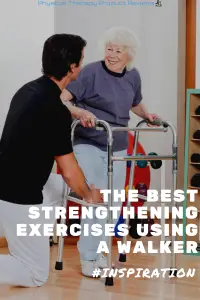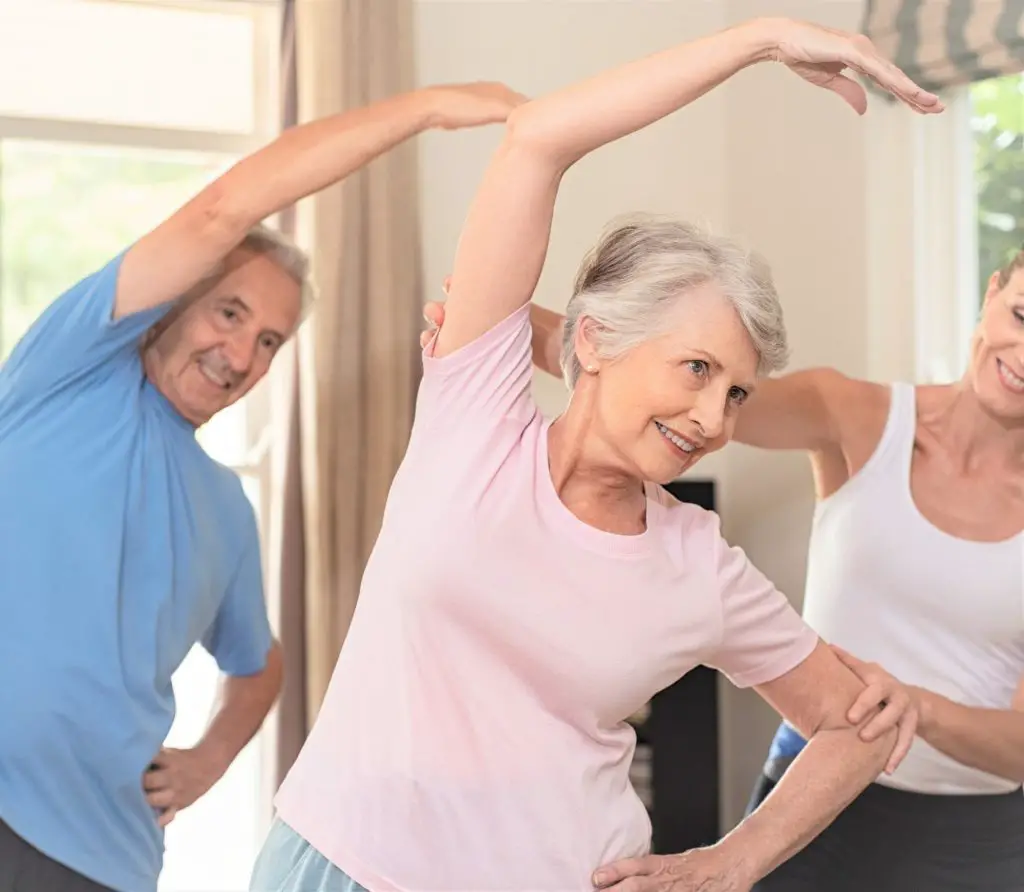Geriatric Balance Exercises
 Do you have good balance? If you are over the age of 65 and have been to your doctor recently, you have probably been asked this question. Statistics show about one-third of older adults report difficulty with balance, with the number drastically increasing after 75 (Healthinaging.org). It’s very common to see this decrease in balance with age, but why?
Do you have good balance? If you are over the age of 65 and have been to your doctor recently, you have probably been asked this question. Statistics show about one-third of older adults report difficulty with balance, with the number drastically increasing after 75 (Healthinaging.org). It’s very common to see this decrease in balance with age, but why?
Well, there are a few reasons. To understand, it helps to think of balance as a system that works together to allow you to understand where your body is in space. This system is made of your vision, your inner ear, sensory information from your nerves in the joints and limbs (aka proprioception), and muscle movement. If one of these is not working to its full capacity, balance may start to decline. In older adults, you may see things such as decreased muscle strength, poor joint flexibility, inner ear dysfunction, and reduced vision. All of these things can impair balance and increase the risk of falls and possible injury.
So what can you do to help improve your balance now and possibly decrease the risk of falls and injury in the future? Below you can find some exercises and suggestions to help you increase your balance and your confidence!
Are you worried about your strength and scared to fall? Check out the best strengtheningexercises with using a walker to help

Single-Leg Stand
For this exercise stand behind a steady, solid chair and hold on to the back of it. Lift up your right foot slowly, with control and balance on your left foot. Hold that position for as long as you can, then switch feet. The goal of this exercise is to hold the pose for up to a minute. When you start to get more confident and steady try bringing one hand off of the chair. Then build up to standing on one foot without holding on to the chair.
Sit to Stand
This exercise is great for developing leg and core strength, which are muscle groups that are very helpful with balance. For this exercise start by sitting in a solid kitchen chair. Before you start, make sure you scooch forward in the seat and both feet are firmly placed on the ground at a 90-degree angle. Start to lean forward and lift up off the chair using your leg muscles. Come all the way up to stand and then slowly start to sit back down. When you sit down, keep your knees behind your toes and send your weight into the heels. Try to control the descent as much as you can to really get the leg muscles working. If you need a little assist you can use a chair with armrests, using the armrests to assist, but make sure your legs are doing most of the work. Repeat this ten times, and if that is too easy do ten more.
Standing Marches
For this exercise start with your feet hip-width apart. From here slowly start to bring the leg knee up towards the ceiling, until your thigh is parallel with the floor. Hold for one second and then slowly bring the foot back down to the floor. Switch over to the other side. With this move try to keep your torso straight and not to lean forward. This compensation decreases the amount of work the core and legs do, which doesn’t help you reach your balance goals. If you would like something a little more sturdy, try starting off holding onto a solid chair arm’s length ahead of you. Then over time, start to bring one hand down and then the other. If you would like to take it up a notch progress to the toe tap exercise below. Try and aim for 15-20 repetitions of this exercise.
Toe Taps
Starting in the same position as the standing marches, standing in front of a step (or low piece of furniture). Just as you did for the standing marches, start to bring up your left knee, this time aiming your foot to tap the edge of the step. Slowly return the foot back down to the ground and repeat on the other side. Again, if you’d like, you can hold onto a wall or piece of furniture for stability. Try not to compensate with a forward lean of the trunk with the leg movements. Perform 20 toe taps on each side.
Heel-Toe Walk
For this exercise make sure you have a clear open space to move. Begin with good upright posture and extend your arms out to the side. From here start to place one foot directly in front of the other, like you are walking on a balance beam. Take about 4-5 steps forward and then turn around and do the same thing. Throughout the exercise try to keep that upright posture and keep your eyes ahead. This helps you use your peripheral vision to observe the floor, further helping your balance. If you’d like, you can start this exercise walking next to a wall or kitchen counter, using a hand to steady yourself as needed. Over time try to move towards a more open space to test your balance. Do 3-4 laps of this exercise.
Vary it Up
The human body adapts to the environment around it. So, if you only walk on solid, flat surfaces and then one day decide to go walk on the sand, you may have a pretty difficult time balancing. Every so often, try challenging your body and balance systems and go walk on the grass or a cobblestone street. If that’s note attainable try standing on a balance board or foam balance pad for some challenge. The occasional challenge helps keep the body’s balance centers working at its best.
Exercise
If you would like to make working on your balance more of a social get together with friends try looking up local exercise classes for seniors. Local gyms offer a variety of senior yoga and tai chi classes that will enhance your balance. If you would rather do things on your own schedule, you can find a variety of DVDs and online videos to take you through a balanced routine.
Conclusion
Overall, balance is something that can be enhanced even as you age. So take the steps today to address your balance problems. A few simple changes can help decrease your risk falls, lower the chance of injury, and greatly improve your quality of life.
Works Cited
“Balance Problems.” The Health in Aging Foundation, Nov 2016. https://www.healthinaging.org/a-z-topic/balance-problems/basic-facts
Bruin, E. et al. “Effect of additional functional exercises on balance in elderly people.” Sage Journals 21, 112-121 (2007).
Disclaimer: The information provided in this post is for educational purposes only. This is not a substitute for a medical appointment. Please refer to your physician before starting any exercise program.
